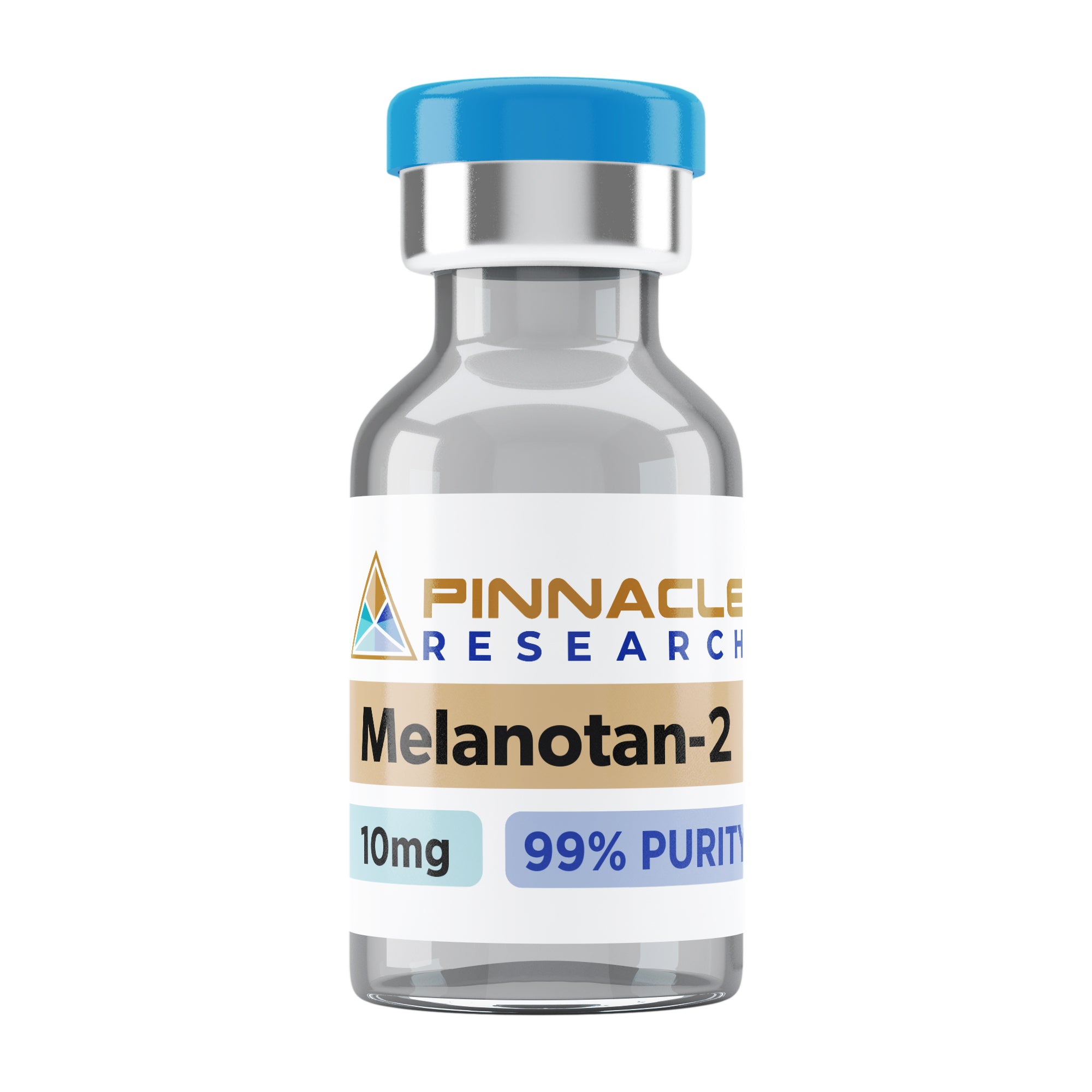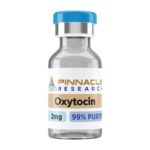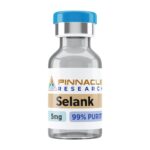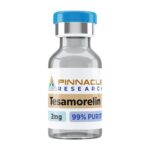About Melanotan-2
The Melanotan 2 (MT-2) peptide is a synthetic genre of the naturally produced human alpha-melanocyte-stimulating hormone and was developed by the University of Arizona in the 1980s. Scientific studies by the University of Arizona researchers showed that the peptide caused skin darkening and enhanced sexual arousal in rodents. These findings triggered the artificial development of the peptide for medicinal use. Over the years, more research studies have revealed many advantages of the peptide in improving overall health.
What Is Melanotan 2?
Melanotan 2 is the synthetic variety of the human α-MSH (alpha-melanocyte-stimulating hormone). The peptide was initially developed in the 1980s to function as a sunless tanning option. The first developers of the peptide were researchers from the University of Arizona. The latter was intrigued by the capabilities of the peptide to trigger sexual arousal and skin darkening in rodents. However, more scientific studies on Melanotan 2 have uncovered additional health benefits associated with the compound over the years.
Melanotan 2 Peptide Chemical Structure
- Peptide Sequence: Nile-Asp (1)-His-D-Phe-Arg-Trp-Lys (1)
- Molecular Formula: C50H69N15O9
- Molecular Weight: 1024.198 g/mol
Melanotan 2 Research and Effects
Melanocortin Signaling
The metabolic effects of the Melanotan 2 peptide are caused when the peptide binds itself to the melanocortin receptors. There are five melanocortin receptors, each having a unique function in the body. How does Melanotan 2 affect the melanocortin receptors after the binding process?
- MC-1R is located on the melanocytes, and when the Melanotan 2 peptide stimulates it, it causes the darkening of hair and skin.
- MC-2R is located inside the adrenal glands, and when it’s stimulated by Melanotan 2, it enhances the secretion of the adrenal hormones.
- MC-3R is primarily involved in energy regulation and controlling appetite. Currently, it’s unknown what kind of effect the Melanotan 2 peptide has on it.
- MC-4R, when stimulated by Melanotan 2, it alters sexual behavior and feeding habits. The melanocortin receptor also affects energy homeostasis and male erectile function.
- MC-5R is the last melanocortin receptor affected by Melanotan 2 and is found in the pancreatic islet cells and sweat glands. Researchers need to be made aware of how Melanotan 2 affects MC-5R.
Research studies show that Melanotan 2 primarily binds to the MC-4R and MC-1R receptors. It also weakly binds to the MC-3R. There is no evidence to show if the peptide affects the MC-5R receptor.
Autism
Recent studies on the mouse models of autism spectrum disorder (ASD) suggest that Melanotan 2 can reverse certain features experienced by patients who have autism. Currently, there is no treatment for autism spectrum disorder. But recent clinical studies have indicated that oxytocin therapy may mitigate some behavioral problems caused by ASD. During the study, a mouse model of maternal immune activation was used by researchers to investigate if Melanotan 2 can stimulate oxytocin release. Oxytocin has been confirmed to reduce common ASD behaviors and counteract ASD.
Findings from the research revealed that the MT-2 peptide reversed the following behavioral effects of ASD:
- Decreased communication
- Repetitive behaviors
- Impaired social interaction
Administration of Melanotan 2 triggered more oxytocin receptor expression in specific sections of the brain. Hence, there could be a direct correlation between oxytocin signaling and ASD-specific behaviors. These findings suggest a potential avenue in developing a treatment for autism spectrum disorder.
Fighting Hunger
Scientific evidence suggests that Melanotan 2 can reduce hunger behavior and fat storage in animal models. Studies confirm that the melanocortin-4 receptor plays a crucial role in food preference, and Melanotan 2 is a potent agonist of the MC-4R. When Melanotan 2 was administered to mice, they experienced a reduced food consumption rate and had less preference for fatty foods. The mice administered with the peptide ignored fatty foods, which they had previously enjoyed. On the other hand, mice devoid of the melanocortin-4 receptor were immune to the Melanotan 2 effects and consumed fatty foods exclusively.
Melanotan 2 has the same effects as the hormone leptin (satiety hormone), which reduces food intake and cravings. Unfortunately, leptin hasn’t been a viable treatment option for obesity, even for individuals who experienced Leptin deficiency. Both Melanotan 2 and Leptin are suspected of causing an increase in the expression of TRH in the hypothalamus’ paraventricular nucleus. The paraventricular nucleus is the brain’s section that affects food intake and satiety.
Diabetes
Diabetes’ pathogenesis is characterized by high blood sugar levels, production of ketone bodies and hypersecretion of glucagon. Research studies confirm that leptin can counteract some of these factors by triggering increased glucose uptake, suppressing glucagon production and blocking the pathway leading to ketone body formation. Since the above actions aren’t dependent on insulin, leptin is being further investigated as an alternative treatment for diabetes. So far, research studies have discovered that leptin affects blood sugar levels through melanocortin receptors. It has also been revealed that Melanotan 2 can trigger similar effects. The main difference being leptin effects are limited to the brain and don’t pass the blood-brain barrier compared to MT-2. Therefore when leptin is exogenously administered, substantial quantities of the drug don’t reach the CNS, hence limiting its effectiveness as a drug. Luckily MT-2 doesn’t face these challenges but effectively affects the melanocortin receptors.
Controlling Impulse and Alcohol Intake
The MT-2 peptide can affect oxytocin signaling and behavior in ASD. Studies on the peptide and the melanocortin receptors show that the MC-4R receptor can affect impulse control. Previous studies on rats show that MT-2 administration increased water intake in subjects that preferred alcohol and reduced alcohol intake. Recent studies have revealed that MT-2 works synergistically with naltrexone in sharp-binging ethanol intake in mice. Findings from these studies show that mT-2 can be used in treating other disorders apart from alcohol-related disorders. The peptide can deal with carvings triggered by the mammalian brain.
Erectile Dysfunction
Most of the time, erectile dysfunction is associated with vascular issues in most men. It is treated using sildenafil and other medications, which enhance blood flow to the vascular tissues by reducing vascular resistance. However, when vascular issues don’t cause erectile dysfunction, medications like sildenafil won’t be efficient. Many studies confirm that MT-2 is an effective treatment of erectile dysfunction. In a controlled study on men who failed to ED using sildenafil, nearly 80% responded positively to Melanotan 2 treatment. Many ongoing studies are looking at the effects of Melanotan 2 in treating sexual disorders in both men and women.
Impacts Wakefulness
Sleep and arousal, with references to consciousness, are one of the most complicated functions of the brain. Research studies have uncovered that several different neuron populations affect different arousal reactions in the body. The hypothalamus’ paraventricular nucleus regulates arousal responses in various settings like stress, feeding and social interaction. According to research studies on mice, MT-2 increased arousal through interaction with the paraventricular nucleus’ neuronal fibers. Stimulating the pathway can cause instant wakefulness when one moves from the NREM to the REM sleep phase. More studies are expected to uncover how MT-2 can be used in enhancing concentration and improving sleep.
Alzheimer’s disease
According to previous studies, activating the pro-opio-melanocortin-derived neuropeptide could save some synaptic dysfunction. The synaptic dysfunction is caused by neurofibrillary (amyloid) tangles associated with Alzheimer’s disease. The melanocortin receptors can activate the pro-opio-melanocortin-derived neuropeptide. House model mice were tested to determine if MT-2 could be instrumental in this setting. Findings from the study showed that MT-2 prominently reduced the A1 subtype of reactive astrocytes and substantially reduced amyloid accumulation. The A1 astrocytes are suspected to be the primary influencer of neuron death and neurotoxicity in Alzheimer’s disease. Additionally, the findings show that melanocortin activation might potentially be a threptic treatment target for Alzheimer’s disease. Hence presenting a novel pathway to Alzheimer’s disease treatment investigations and mitigating neurotoxicity in degenerative brain diseases.
The Melanotan 2 peptide is one of the most researched peptides in the world. Most research studies have revolved around impulsive behavior, human behavior, and sexual desire. Various forms of the MT-2 peptide have been used in the studies. However, the researchers slowed down on their studies and clinical trials because of challenges in the routes of administration. Nevertheless, there are many ongoing studies on MT-2 and its potential to improve overall human health. When administered on rats the peptide exhibited low oral, excellent subcutaneous bioavailability and manageable side effects.
Melanotan 2 is a peptide with great potential to improve the treatment of various health conditions. Scientists and researchers continue investigating the possible treatments that researchers can develop from the peptide.




